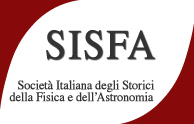Speaker
Description
The Seminary of Bergamo, founded in 1567, preserves a collection of around 200 instruments generally in a good state of conservation, most of which date back to the nineteenth century. The instruments were used for teaching Physics in the Seminary school, whose system in the 18th and 19th centuries was divided into Gymnasium, Philosophical and Theological studies.
Physics, in particular, was a curricular subject in the philosophical course and, throughout the nineteenth century, it made use of the experimental method, as demonstrated by the many documents preserved in the historical archive of the Seminary and by the collection of instruments still present today.
In addition to Physics, mathematics and natural sciences were teaching subjects for future priests, a sign of particular attention to the scientific education of seculars. But does this attention to scientific studies in the Bergamo seminary have more ancient origins?
To hypothesize an answer to the question, let's consider that among the bishops who succeeded one another at the helm of the diocese of Bergamo, mention should be made of San Gregorio Barbarigo (1625 – 1697), Bishop of Bergamo from 1657 to 1664. The numerous studies that see him as a protagonist especially in relation to his subsequent episcopate in Padua they also highlighted his scientific training and his relationships with eminent personalities in the scientific field of the time. An education which, according to researchers, influenced the determination of the Cursus studiorum of the Paduan Seminary; can we also say this for the Bergamo Seminary?

